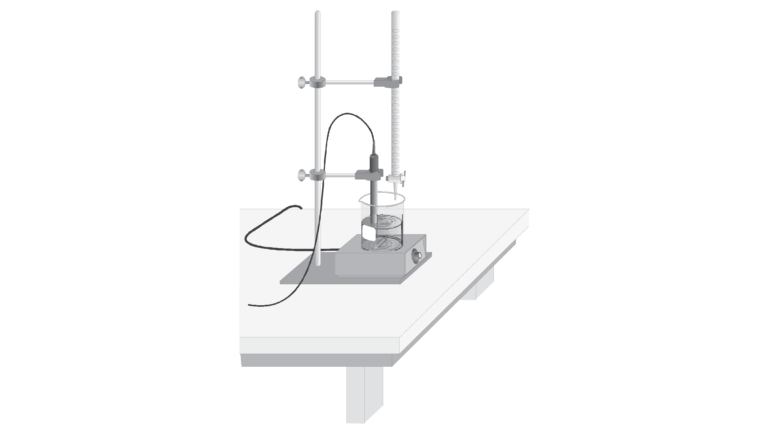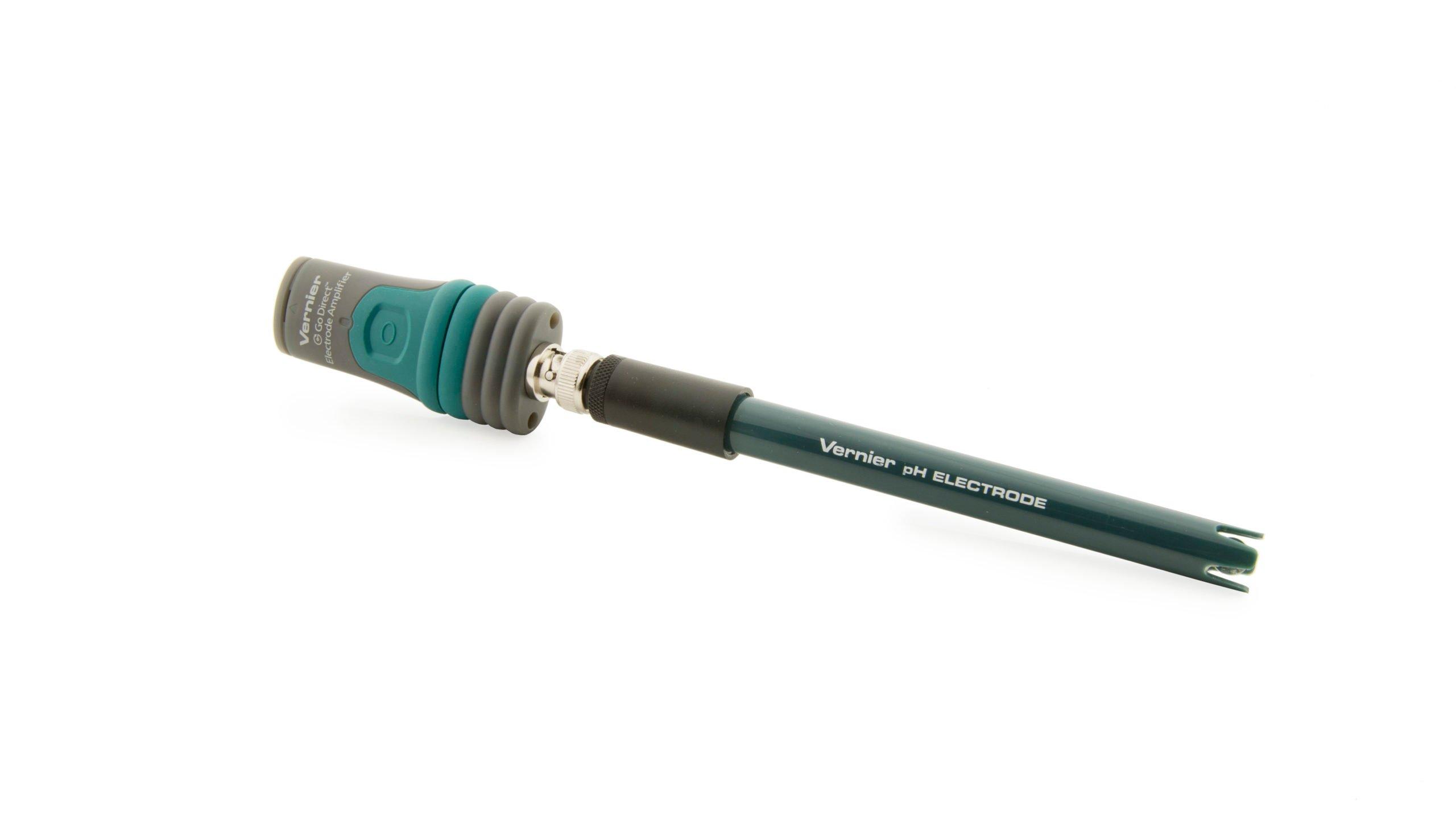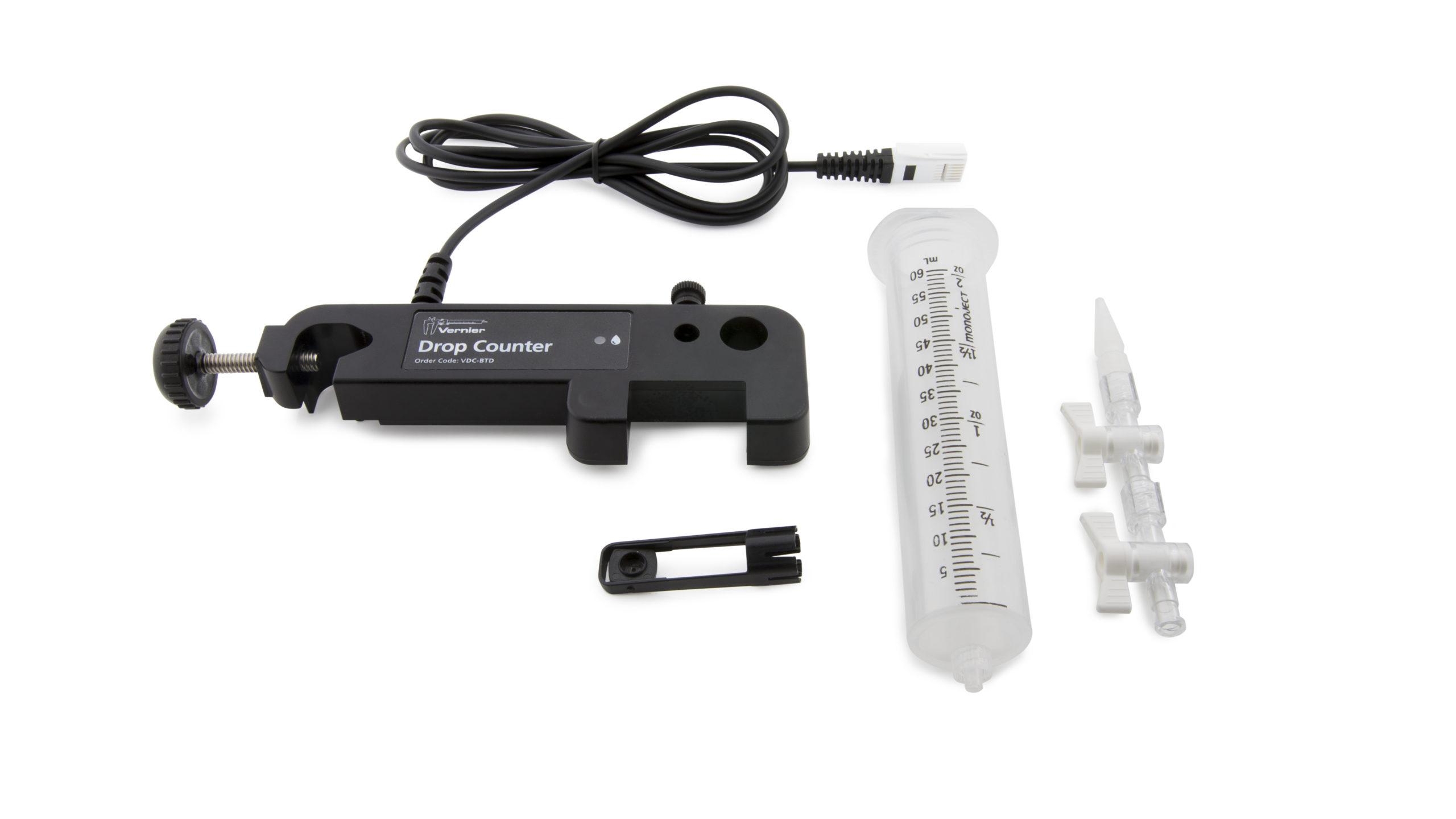Titration of a Diprotic Acid: Identifying an Unknown
Experiment #25 from Chemistry with Vernier
- Education Level
- High School
- Subject
- Chemistry

Introduction
A diprotic acid is an acid that yields two H+ ions per acid molecule. Examples of diprotic acids are sulfuric acid, H2SO4, and carbonic acid, H2CO3. A diprotic acid dissociates in water in two stages:
Because of the successive dissociations, titration curves of diprotic acids have two equivalence points, as shown in Figure 1. The equations for the acid-base reactions occurring between a diprotic acid, H2X, and sodium hydroxide base, NaOH, are from the beginning to the first equivalence point:
from the first to the second equivalence point:
from the beginning of the reaction through the second equivalence point (net reaction):
At the first equivalence point, all H+ ions from the first dissociation have reacted with NaOH base. At the second equivalence point, all H+ ions from both reactions have reacted (twice as many as at the first equivalence point). Therefore, the volume of NaOH added at the second equivalence point is exactly twice that of the first equivalence point (see Equations 3 and 5).
The primary purpose of this experiment is to identify an unknown diprotic acid by finding its molecular weight. A diprotic acid is titrated with NaOH solution of known concentration. Molecular weight (or molar mass) is found in g/mole of the diprotic acid. Weighing the original sample of acid will tell you its mass in grams. Moles can be determined from the volume of NaOH titrant needed to reach the first equivalence point. The volume and the concentration of NaOH titrant are used to calculate moles of NaOH. Moles of unknown acid equal moles of NaOH at the first equivalence point (see Equation 3). Once grams and moles of the diprotic acid are known, molecular weight can be calculated, in g/mole. Molecular weight determination is a common way of identifying an unknown substance in chemistry.
You may use either the first or second equivalence point to calculate molecular weight. The first is somewhat easier, because moles of NaOH are equal to moles of H2X (see Equation 3). If the second equivalence point is more clearly defined on the titration curve, however, simply divide its NaOH volume by 2 to confirm the first equivalence point; or from Equation 5, use the ratio:
Objectives
In this experiment, you will identify an unknown diprotic acid by finding its molecular weight.
Sensors and Equipment
This experiment features the following sensors and equipment. Additional equipment may be required.
Ready to Experiment?
Ask an Expert
Get answers to your questions about how to teach this experiment with our support team.
- Call toll-free: 888-837-6437
- Chat with Us
- Email support@vernier.com
Purchase the Lab Book
This experiment is #25 of Chemistry with Vernier. The experiment in the book includes student instructions as well as instructor information for set up, helpful hints, and sample graphs and data.






